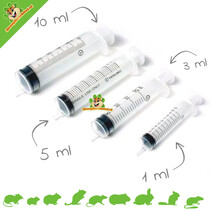Everything for the Hedgehog
Order everything for the Hedgehog easily and quickly at DRD Knaagdierwinkel!
Although we have placed the Hedgehog in the "garden animals" category, there are of course also Hedgehog species that are kept as pets, such as the White-bellied Hedgehog. In this category we are mainly talking about the wild hedgehog.
Hedgehogs are solitary, they live alone and are considered omnivores. In the wild they feed on insects, beetles, worms, snails, spiders etc. Ideally, hedgehogs have access to compost in the garden. You will also find all kinds of tasty things in there, such as the insects that cling to fruit waste. By the end of November, hedgehogs should be able to find enough food themselves, so that young hedgehogs weigh at least 500 g and are therefore prepared for hibernation. A well-fed hedgehog can grow up to 30 cm in length and weigh up to 1.5 kg.
Hedgehogs have no hair and no fur. Their "fur" consists of keratinized hairs in the form of up to 8,000 spines per animal. Their spines are regularly renewed and exchanged without developing bald spots. In dangerous situations, the hedgehog curls up and raises its spines as defense against the enemy.
The life expectancy of a hedgehog is a maximum of 10 years. A hedgehog's core body temperature is 35°C and drops to 1.5°C during hibernation. Its heart beats about 180 times per minute - only about 10 times during hibernation.
Once a hedgehog has found a suitable mate, it can give birth to 2 to 6 baby hedgehogs once or twice a year.
Characteristic of hedgehogs is their sensitive hearing (they can even hear ultrasonic tones) and their pronounced vocalization. We often hear hedgehogs smacking, snorting and panting, hissing, coughing (note - suspected lungworm) or, in dangerous situations, loud cackling or screaming. If a hedgehog feels threatened, this often leads to quick defensive reactions such as biting.
Caring for a sick or weakened wild hedgehog?
If you temporarily take a hedgehog into your home due to illness or underweight, you should urgently consider a number of points:
- Hedgehogs need a shelter in the form of a box or burrow for housing. Most guinea pig houses and rabbit houses are also suitable for this. For example, the floor can be covered with ground cover with a layer of hay . The run must be at least 2 square meters. It is very good to put a rough stone slab in the enclosure, over which the hedgehog should walk. This way he can automatically wear down his nails, as they grow constantly and otherwise have to be shortened by hand if they grow too fast.
- the suitable ambient temperature must be between 18° and 22° degrees. However, during hibernation you must keep the temperature below 6 degrees, so that the hedgehog does not wake up and use too much energy.
- Since hedgehogs are nocturnal animals, they should always be fed in the evening. Wet cat food, hard-boiled eggs, raw minced beef, oatmeal, ripe fruit, carrots, etc. can be used as a starter food. However, to ensure that the hedgehog receives all the important nutrients, hedgehog food is essential.
- Hedgehogs have a tendency to quickly become overweight. Therefore, you should be careful not to overfeed the hedgehog. Too much weight can lead to fatty liver disease and musculoskeletal (muscle/bone) disorders.
- provide sufficient water for the hedgehog. Never give cow's milk! A hedgehog cannot tolerate cow's milk, even in diluted form! The lactose it contains leads to life-threatening diarrhea! Always use special milk for hedgehogs .




